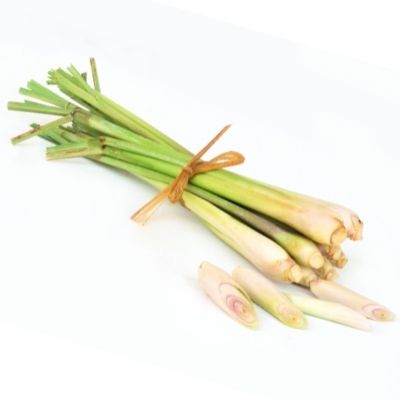
Botanical name : Cymbopogon citratus
Flavor Profile : Floral, Tart lemon and tangy. Undertones of pepper, mint and ginger
A perennial and multicut aromatic grass, lemongrass is also called citronella grass. The prefix ‘lemon’ refers to its characteristic odor, resulting from the presence of citral or lemonal, its major component. In some parts of the world, it is also known as Serai or Squinant.
Regarded for its smoky, sweet, herbaceous and lemony fragrance, Indonesian, Malay, Thai, and Vietnamese cuisines all use it as a flavoring agent in confectionery and many dishes. Its fresh and cool flavor makes it one of the chief ingredients in these cuisine.
Importation note: The use of lemongrass in cooking is usually considered safe; however, if consumed in excessive quantities may cause side effects such as fatigue, dry mouth, dizziness, increased appetite, frequent urination, and allergic reactions. Additionally, it should also be avoided during pregnancy since it initiates menstruation.
Citral also has strong anti-microbial and anti-fungal properties making lemongrass great for many medicinal purposes as well. Additionally, its essential oils are also used as a perfumery agent in soaps and detergents.
Varieties of lemongrass
- Cymbopogon citratus – Lemongrass of this type is commonly known as West Indian or American lemongrass. It is a stem less variety.
- Cymbopogon flexuosus – Lemongrass of this variety is commonly known as East Indian, Cochin or Malabar lemongrass. This lemongrass variety is divided into two groups by the color of its stem:
(1) C. flexuosus var. flexuosus – The stem and leaf sheath of this grass are reddish or purple in color. A superior variety, its essential oil contains over 75-80% citral compound.
(2) C. flexuosus var. albescens – White lemongrass stems and white leaves characterize this variety. The essential oil obtained from this plant contains less than 65-70 percent citral compound, indicating it is inferior in quality. - Cymbopogon pendulus – A variety of lemongrass commonly known as Jammu lemongrass grows white stems and is dwarf in size.
In this article, we will explore growing Cymbopogon citratus (American lemongrass) in container.
Health benefits of Lemongrass
It is considered as a great anti-depressant, analgesic, antipyretic, bactericidal, anti-septic, carminative and astringent agent.
By protecting the stomach lining, lemongrass tea reportedly treats stomach discomforts, indigestion, and gastric ulcers.
Studies have shown that lemongrass extract helps lower cholesterol levels and reduces obecity. Lemongrass tea can help obese patients lose excess weight.
For the treatment of inflammatory skin conditions, lemongrass essential oil is used.
The extract of lemongrass is used in insect repellents.
The antimicrobial and anti-inflammatory properties of lemongrass oil make it an ideal ingredient for hair tonics that reduce dandruff.
A rich source of iron and other minerals, lemongrass prevents anemia by promoting erythropoiesis.
Inflammation of gums and cavities can also be reduced with lemongrass extract.
Lemongrass is a good source of fiber, vitamin A, B, C, K and Iron, potassium, calcium, zinc.
How to grow Lemongrass indoors
Lemongrass is a tall, perennial grass. Growing from a strong base, about 3 meters tall with a meter-wide spread, it is a coarse, linear plant with scaly leaves.
Lemongrass is one of the fastest growing tropical and subtropical grasses. Lemongrass (Cymbopogon citratus) grows well in sunny, moist conditions in tropical climates.
When treated to lots of direct sunlight, lemongrass can grow in containers indoors in cold climates. The lemongrass container should be moved outside after the last frost in spring and brought inside in the winter.
Plant lemon grass in early spring so that it has a good head start before the winter.
Plant size
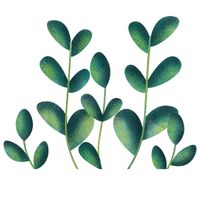
2 – 5 feet ( 24 – 60 inches OR 60 – 150 cm )
Container / pot Size

Container size depends on the size of the lemongrass plant you wish to grow.
If you plant to grow just one clump, a 6 inch container is good enough.
However, if you are planning to grow multiple clumps (4-5), you will need a container which is at lease 16 inches in diameter or a 5 gallon container.
Refer how to choose the right container for your indoor plants for more details.
Sunlight

Full Sun or partial Sun. Partial sun will negatively effect the quality though.
Lemongrass plant thrives in a temperature range of 70 degrees Fahrenheit (21 degrees Celsius). It can sustain low temperatures up to 45°F (7°C). But don’t take any chances if you have the option of providing it with higher temperatures.
For best results in growing Lemongrass indoors, place the container near a large south or north facing window. Or you can place the container near east or west facing windows. Placing under a skylight under direct sun is also a good option.
Refer Best locations and Light requirements for indoor plants for more details.
Soil

Well drained, loose, and rich in organic matter potting mix.
If you are stuck with garden soil, make sure that the soil is rich, loamy, porous and laterite soil. Red or sandy loam soil is great option for growing lemongrass. It should have good drainage and rich organic matter.
Avoid waterlogged soil.
Look for a compost mix which has got a bit sand in it. Or you can mix a little bit of sand and compost with the potting mix in the ratio of 10:20:70.
Refer types of soils for gardening for more details.
Lemongrass thrive on a neutral soil with pH range 6 to 7. But it will sustain a pH upto 9 (alkaline soil).
Please refer How to get the right potting mix for your container plant for more details.
Sowing
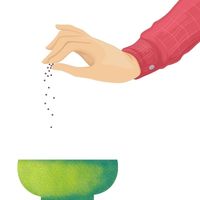
Lemon grass can be grown by seeds of root division. However, growing lemongrass from seeds is a little tricky and will need to you take care of temperatures and soil a bit more.
For planting lemon grass with seeds you can use 2 methods:
Method 1. sowing the seeds directly on the pot.
Lemon grass seeds are very light and the size and shape resembles the size of a cumin seed.
Put the seeds on the soil and ruffle the soil a bit after dropping the seeds. The planting depth recommended in some seed packaging is 1/8th of an inch, however, I don’t think measuring that exact depth is a practical idea.
Water the soil and cover it with plastic bag or plastic container. This will ensure a humid environment for seeds to grow.
Method 2. If you are not finding a lot of success by directly sowing the lemongrass seeds in the pot, you can try and grow them on a tissue paper.
Put some seeds in between 2 tissue papers (or put the seeds on one half and fold the other half of tissue paper over it). Wet the tissue paper and keep it in a zip lock bag. Poke some holes in the bag for some air circulation.
Keep the tissue paper moist and keep checking it everyday.
In both the methods you should see small (smaller than you nail) seedling germinating in about 5-6 days.
Transfer the seedling from tissue paper to a pot or a tray. in about 8-10 days the seedling will be almost 2 cm in size.
In both the methods, make absolutely sure that the place you put the container is warm.
Planting lemon grass by root division method is a relatively less adventurous and easier method (a method i prefer by the way).
Lemon grass grows in clumps. Just grab the number of clumps you need for reporting and twist them up from the ground. Cut the clumps to a length of 20-25 cm.
Clean the root section by removing any old roots you see and scrub the thick skin (basal plate) a little on the base of the clump.
You can either plant this directly in a pot or put these divisions in a jar with some water.
You can see 1 inch roots in clump you have put in water in just 1 week. The clumps which you will directly plant will show you some growth in about 3 weeks.
Watering
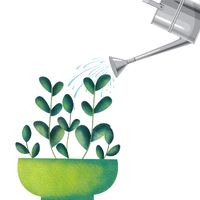
Water the potting mix when you are sowing the lemongrass.
Lemon grass is quite drought resistant after establishing. Keep the soil moist and water when ever the soil feels dry to the touch.
Once the plant is established, reduce the frequency of water. May be once every week or two. This also depends on the climate. The whole idea is to not let the soil completely dry.
Do not over water the pot. Waterlogged soil is not good for lemongrass plant.
Make some drainage holes at the bottom of the container to drain the water just in case excess water is used while watering lemongrass.
Refer How to make drainage holes on potting container for more details.
Harvesting

In about 3 months, lemon grass plant will reach maturity.
However, you can harvest the leaves of young plants also.
Just snip the required number of leaves using a pruning tool or scissors. Leave at least 10 cm of stem above the ground for new leaves to grow.
For harvesting the clump, just twist and pull out the lemongrass from the ground or pot.
Plant care
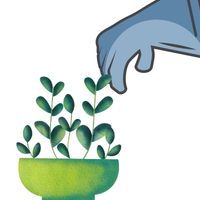
Lemon grass loves growing and spreading. In case your lemon grass plant becomes too dense that might mean the plant is getting root bound. Its is a wise idea to divide the clumps from this plant and plant them on another container.
Lemongrass plant is very sensitive to frost. Move the plant in a location in the house where you can maintain the temperature above 50 degree Fahrenheit ( 10 degree Celsius).
SUBSTITUTES FOR LEMONGRASS IN THE KITCHEN
- Lemon balm
- lemon zest
- sorrel
- Lemon
- Lemon verbena
How to keep Lemongrass fresh
Lemongrass leaves can be stored in a dry cool place for up to 3 days.
You can store lemongrass stems in fridge for up to 10 days.
OR, you can also blend it in a paste with garlic, chilly and ginger and store it for about 10 days.
Lemongrass can be dried, however it will loose some of its flavor.
Lemongrass freezes well. Remove the leaves from the stem and freeze the whole stem or cuttings for about 4-6 months.
Please refer to how to store herbs and spices for more details.
How to use Lemongrass in the kitchen
Since lemongrass flavor deepens when it is cooked, you can add it early during cooking for an intense taste, or wait until later for a light seasoning.
You can bruise or crush stalks (and remove them before serving) in order to release their flavor during cooking, or you can chop them finely, mince them, or grind them into a soft pulp.
In addition to fresh stalks of lemongrass, dried powdered lemongrass is also available, called sereh powder. A spoonful of sereh powder has a similar taste as a fresh stalk.
As an ingredient in a variety of intricately flavored Malaysian dishes, it combines sweet and sour flavors, salty and spicy flavors, and citrus and fish flavors.
From the lower bulbous half of the bulbous root comes the best flavor of lemongrass. Despite this, the upper stems can also be used for flavoring teas, soups, and marinades.
Dishes that go well with Lemongrass : marinades, salads, curries, stews, soups, tea, jelly, cake, vodka.
Preparation of Lemongrass for food : Lemongrass can be dried, powdered or used fresh.
The fragrant, flavorful flesh of lemongrass is the white or yellow softer core that lies beneath the thick, green outer skin.
To infuse lemongrass flavor into a dish, slice the inner stalk into long-ish pieces, and either crush or bend each section until it releases its flavor.
The most tender and flavorful parts (lower part) of the lemongrass stalk should be used for edible seasoning.
Pairing Lemongrass with food
Seasonings that go well with Lemongrass :
Tamarind, jalapeño, lemon juice, lemon zest, garlic, Thai basil, makrut lime, turmeric, anise seeds, cumin, fish sauce, ginger, curry powder, basil, chili paste, galangal, shrimp paste, chili peppers, coriander seeds, mint, cilantro, soy sauce, cloves, fennel, cinnamon.
Fruits and Vegetables that go well with Lemongrass :
tomatoes, carrots, cabbage (red cabbage, green cabbage), Mushrooms (Enoki Mushroom, Morel Mushroom, White Mushroom / Button mushroom, Cremini Mushroom, Portabella Mushroom, Shiitake Mushroom, Maitake Mushroom, Chanterelle Mushrooms, Oyster Mushroom), peas, peppers (green pepper, yellow pepper, red pepper) , Onions, coconut, peaches, shallots, cabbage (red cabbage, green cabbage), pear, pear.
Proteins that go well with Lemongrass :
Fish and seafood, beef, pork, peanut, tofu, chicken.

